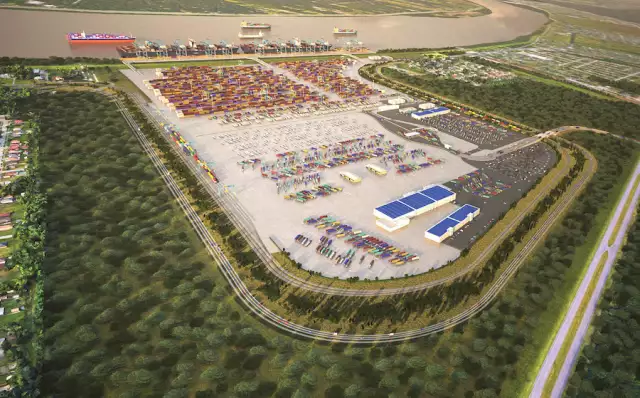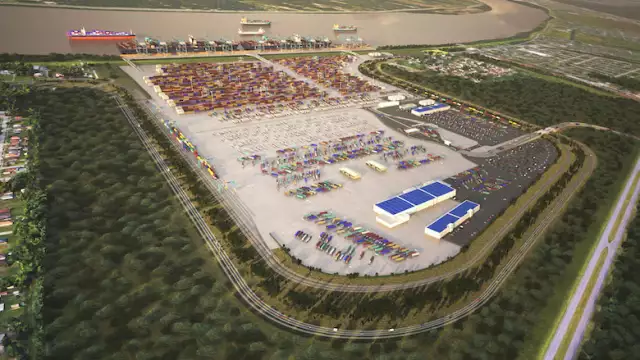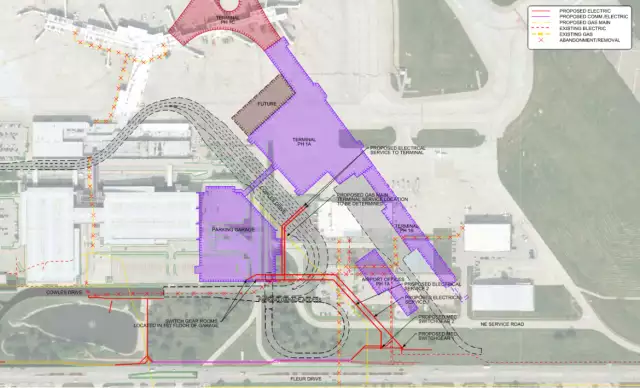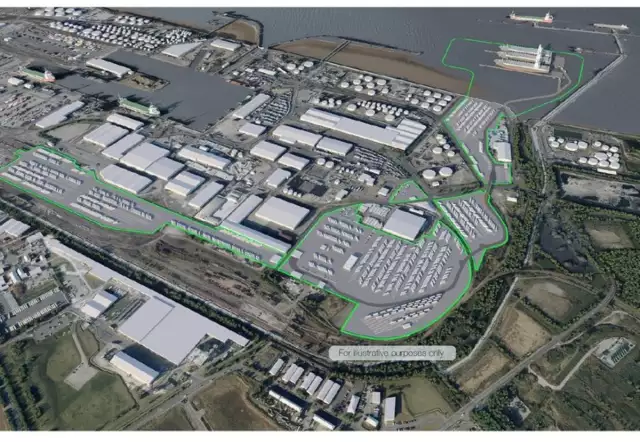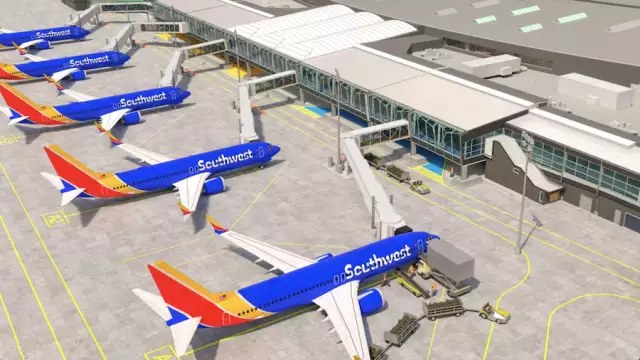$1.5B International Container Terminal Planned for St. Bernard Parish
$1.5B International Container Terminal Planned for St. Bernard Parish
May 24, 2022 David M. Brown KEYWORDS container terminal / Louisiana / New Orleans / ports / shipping Order Reprints No Comments
The Port of New Orleans is planning a second container terminal and distribution center along the Mississippi River, with construction to begin in 2025.
The $1.5-billion Louisiana International Terminal (LIT) will be built in Violet, St. Bernard Parish. The 400-acre project will include container-handling equipment, the entrance gate and access modifications to roadways and railways.
The project will be funded by a P3 partnership and Port NOLA is now considering qualified financial and operating partners, notes explains Jessica Ragusa, Port NOLA communications manager.
Port NOLA has not yet awarded a contract to a general contractor or architect, but Omaha-based HDR Engineering Inc. has been hired to lead a three-year process of program management and program control services including the NEPA process of public meetings, permitting, environmental review of wetlands impact and design.
“The project is in the early planning stages, but will be designed to serve the needs of modern terminal operators, with a focus on sustainability and environmental stewardship,” says Andrew Thiess, HDR’s deputy program manager.
He explains that the Port NOLA is committed to the environmental certification program, Green Marine and a Clean Truck Replacement Incentive Program to help truck and fleet owners replace old engines for newer ones with cleaner emissions. In addition, Port NOLA is also planning wetlands mitigation.
Subject to permitting approval, construction should start in 2025. Two to three years later, one wharf is scheduled to open, with a capacity of 600,000 containers a year. In 2052, full capacity is expected to grow to 1.2 million.
“Construction will be a multi-year phased process requiring public-private partnerships and regulatory approvals and will be let to contractors accordingly,” Thiess says. “The Port of New Orleans intends to engage with the contracting community for early involvement in the final design and construction of the terminal. There could be one single general contractor or several.”
The site was chosen because of its location within the US Army Corps of Engineers’ $14-billion Hurricane & Storm Damage Risk Reduction System, which includes recently reinforced federal levees.
“We also know that container terminals attract related business such as warehousing and distribution centers to the area. These businesses save costs and time by being located near a container terminal,” Ragusa says.
As a result, an additional 800 acres adjacent to the 400-acre terminal will accommodate value-added and logistics-related businesses as well as buffer port operations from the community and provide for public-benefit spaces.
Port NOLA is also committed to working with local, state and federal transportation partners to design and build an elevated roadway along the 40 Arpent Canal outside the levee system that would connect Lower St. Bernard Parish to the interstate system; it is expected to relieve congestion, offer an alternative route for trucks, serve as an hurricane evacuation route, facilitate entry and exit from the new terminal and attract additional economic investments to the area, she says.
This would be a separate project and, while not be a Port NOLA project, the port is supporting early steps in coordination with the Regional Planning Commission and the Louisiana Dept. of Transportation and Development, Ragusa explains.
The LIT will supplement and not replace the Napoleon Ave. Container Terminal, which opened in 2004 upriver from the Crescent City Connection Bridge. Port NOLA is revamping that first terminal with a $112 million investment, including four new container gantry cranes expected to be operational this spring.
The new terminal is anticipated to create $3.7 billion in economic impact during the construction period, according to a spring 2021 study by Lewis Terrell and Associates. On average and on an annual basis, LIT construction will generate 887 U.S. jobs, 534 for Louisiana, 358 jobs in the Port Jurisdictional Region and 105 jobs annually in St. Bernard Parish. Construction and operations should generate $9.3 billion in additional federal tax revenues and $807 million in Louisiana tax revenues, the report continues.
“Building a new container terminal on the mighty Mississippi in a region known for hurricanes and flooding involves some notable challenges,” Thiess says. “But the location was specifically chosen for its resiliency in the face of these challenges. It has naturally deep water that is easy to navigate and will require minimum dredging.”
